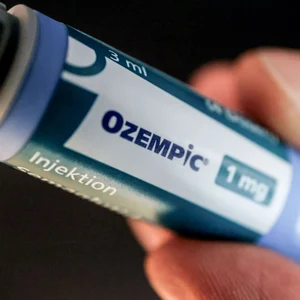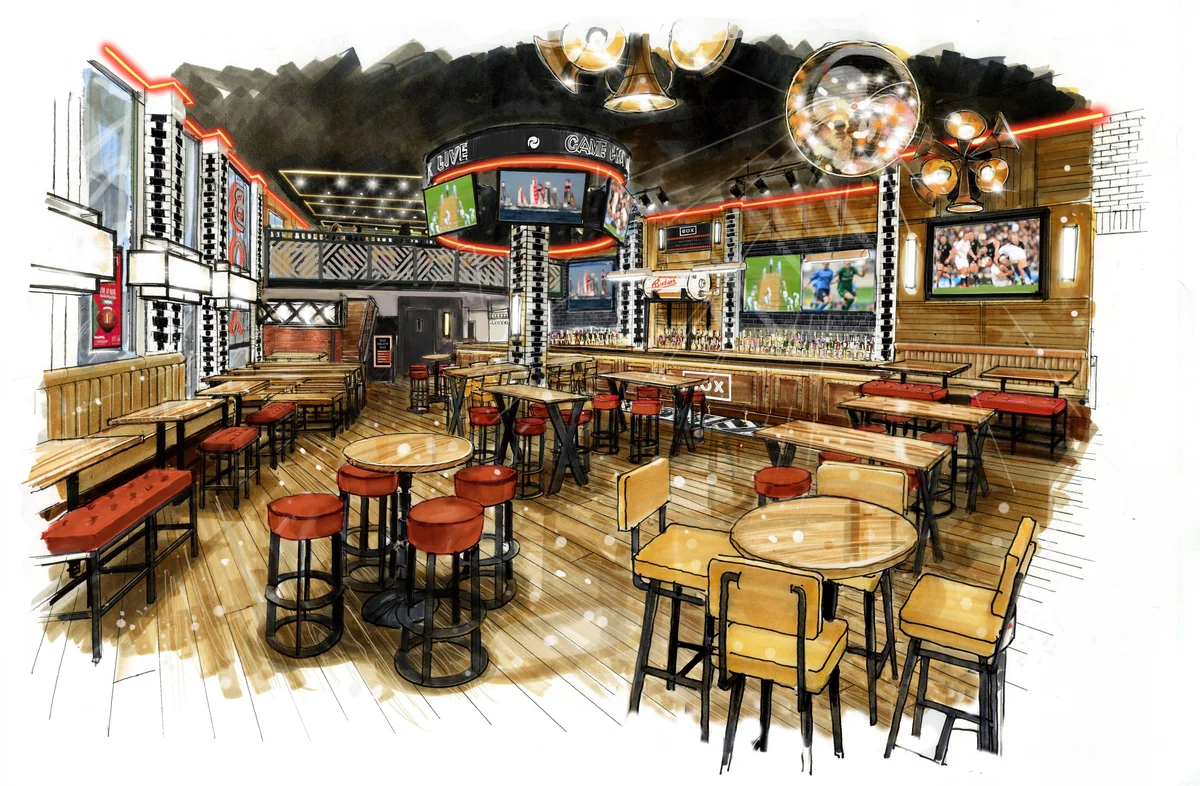
The is only one person mentioned by name in President Donald Trump’s March 27 executive order titled “Restoring Truth and Sanity to American History.” That’s the order that seeks to “restore the Smithsonian Institution to its rightful place as a symbol of inspiration and American greatness” through removing mentions of historical racism. And the name in the order will probably not ring a bell.
“Lindsey Halligan, Esq.”
Halligan, according to the order, will consult with Vice President JD Vance to “remove improper ideology” from Smithsonian properties.
The first question is: What is improper ideology, exactly?
The second: Who is Lindsey Halligan, Esq.?
We have her on the phone, actually. She’s calling from the White House.
“I would say that improper ideology would be weaponizing history,” Halligan says. “We don’t need to overemphasize the negative to teach people that certain aspects of our nation’s history may have been bad.” That overemphasis “just makes us grow further and further apart.”
As for the second question: Halligan, 35, is a Trump attorney who seems to have tasked herself as a sort of commissioner – or expurgator, according to critics – of a premier cultural institution.
After moving to D.C. just before the inauguration to continue working for Trump as a special assistant and senior associate staff secretary, Halligan visited local cultural institutions, including the Smithsonian museums of Natural History, American History and American Art. She didn’t like everything she saw. Some exhibits, in her view, did not reflect the America she knows and loves.
“And so I talked to the president about it,” Halligan says, “and suggested an executive order, and he gave me his blessing, and here we are.”
– – –
Here we are: A former Fox News host is leading the Pentagon. A vaccine skeptic is running the Department of Health and Human Services. A former professional wrestling executive is head of the Department of Education.
And Lindsey Halligan, Esq., could turn a major cultural institution upside down.
How did she arrive at this point? Halligan grew up in Broomfield, Colorado, and went to a private Catholic high school, Holy Family, where she excelled at softball and basketball. Her parents worked in the audiology industry. Halligan’s sister, Gavin, a family-law attorney in Colorado, ran for a state House seat as a Republican in 2016 in a blue district and lost.
Halligan attended Regis University, a Jesuit university in Denver, where she studied politics and broadcast journalism. She was always interested in history, she says – particularly the Civil War and the westward expansion of the country.
She competed in the Miss Colorado USA pageant, making the semifinals in 2009 and earning third runner-up in 2010, according to photos and records of the events. This was back when Trump co-owned the organization that puts on the Miss Universe pageant, for which Miss Colorado USA is a preliminary event.
“Sports and pageants taught me confidence, discipline, and how to handle pressure – on the court, on the field, on the stage, in the courtroom and now in the White House,” Halligan says in a post-interview email.
She studied law at the University of Miami. She interned for the University of Miami Law Innocence Clinic – which works to exonerate wrongfully convicted people – and the Miami-Dade County public defender’s office.
Halligan was a “very smart, respectful and well-liked student,” says one of her professors, who spoke on the condition of anonymity because she did not have permission from the university to speak about a former student. The professor recalls that people often underestimated Halligan because of her good looks.
Halligan graduated in 2013 and handled insurance matters in South Florida for a firm called Cole, Scott & Kissane. She made partner in 2018 and defeated a more than $500,000 property damage claim in a 2019 case about a leaky roof.
Halligan says she met Trump at a November 2021 event at Trump International Golf Club in West Palm Beach. She had come from court and was in a suit, which probably made her stand out from other female attendees. Trump noticed her, asked what she did and made her part of his legal team in early 2022.
In the president, “I saw the same thing that I saw when I interned at the Innocence clinic: someone who was getting railroaded by the system,” Halligan says.
She was present at Mar-a-Lago for the August 2022 FBI raid of the president’s property, during which classified documents were seized. With her pageant looks, legal degree and broadcast journalism training, she became one of the president’s defenders on TV.
“They looked at God-knows-what in there, and did God-knows-what in there,” Halligan told Sean Hannity on Fox News shortly after the search. “We have no idea. What the FBI did was an appalling display of abuse of power.”
Halligan was a front-row guest in Trump’s box at the 2024 Republican National Convention. She was later a target of Iranian hackers looking to infiltrate the campaign, according to CNN. She had become part of Trump’s inner circle.
The president “holds her in high regard,” says John Rowley, a former Trump attorney who worked with Halligan. “She obviously has the president’s confidence.”
Halligan has been pictured in the Oval Office, sometimes at the side of Chief of Staff Susie Wiles, as the president signs various documents. On March 6, Halligan herself introduced two proclamations: on Irish American Heritage Month (Halligan identifies as such) and Women’s History Month – “in honor of everything you’ve done for women,” she told the president.
Then there was the March 27 executive order – signed “behind closed doors,” according to ABC News – in which Halligan herself was named, at Halligan’s own suggestion.
“She is an avid – and well-read – fan of history,” emails Jim Trusty, who worked with Halligan until he resigned from Trump’s legal team, citing “irreconcilable differences” with Trump. “I had no idea that there was going to be an Executive Order regarding the Smithsonian, but in hindsight it makes a lot of sense to me that Lindsey would have a role.”
The order affirmed her title using a splendid cascade of Washington jargon: “Assistant to the President for Domestic Policy and the Special Assistant to the President and Senior Associate Staff Secretary.”
The Organization of American Historians was sharper in its estimation of the other words in the executive order: “a disturbing attack on core institutions … and history itself.”
– – –
Trump is not much of a museumgoer. On Feb. 21, 2017, he visited the National Museum of African American History and Culture. In his memoir, Smithsonian Secretary Lonnie G. Bunch III, then the museum’s director, recalled that, before the president arrived, aides told Bunch that Trump “was in a foul mood and that he did not want to see anything ‘difficult.’” Nevertheless, Bunch began the private tour in a gallery about the transatlantic slave trade.
“It was not my job to make the rough edges of history smooth, even for the president,” Bunch wrote.
In the executive order that features Halligan, three D.C. museums are specifically mentioned: First, a reference to an infographic about “white culture” on the African American Museum’s website that was removed in 2020, after Donald Trump Jr. criticized it in a social media post.
The second is the Smithsonian American Women’s History Museum, whose opening is years down the road – yet the order claims it will celebrate “male athletes participating in women’s sports.” False, according to Smithsonian spokeswoman Linda St. Thomas.
The third museum is the Smithsonian American Art Museum, which Halligan visited this winter as she was getting to know D.C. An exhibit titled “The Shape of Power: Stories of Race and American Sculpture” is specified in the executive order as an example of improper ideology.
Walking through that exhibition, it’s easy to see how it could become a flash point for the Trump administration. Text accompanying the artworks, which explore the way different races of people sculpt themselves and others, explains that “race is not biological” and that sculpture “has been a powerful tool in promoting scientific racism” – in that it could be used to perpetuate harmful stereotypes about bodies of color.
During her visits to the museums, Halligan says she saw “exhibits that have to do with either another country’s history entirely or art and sculpture that describes on the placards next to it that America and sculpture are inherently racist,” though she did not offer specific details.
She says she also saw exhibitions that did not focus on America at all. “There’s a lot about other countries’ history that has nothing to do with America, and I think, you know, America is so special,” she says, adding: “We should all be focused on how amazing our country is and how much America has to offer.”
Halligan is not alone in the MAGAverse for wanting to change the nation’s cultural institutions. The content of the executive order was foreshadowed by a Nov. 25 Wall Street Journal opinion piece co-written by the Heritage Foundation’s Mike Gonzalez, one of the contributors to Project 2025. With co-author Armen Tooloee, he laid out a plan for “How Trump Can Rid Washington of Wokeness” – and “retake control of museums” was one step.
“Smithsonian museums have forsaken their mission of spreading knowledge and instead are trying to ‘decolonize’ society,” they wrote. “… Mr. Trump should ask Congress to restore ideological balance by appointing real conservatives willing to stand up to progressive views to the Board of Regents” of the Smithsonian.
How Halligan (and the vice president, who is on the board of regents) will carry out the executive order remains to be seen. The order is unusual because the Smithsonian’s programming is not under the purview of the executive branch. The independent institution receives about 60 percent of its funding from congressional appropriations and federal grants and contracts, according to fiscal 2023 numbers, but those funds cover operations, infrastructure and maintaining collections. Generally, exhibitions are funded by private donations.
But the order makes clear that the administration will find a way to punish the museums financially if desired changes are not enacted, by prohibiting “expenditure on exhibits or programs that degrade shared American values, divide Americans based on race, or promote programs or ideologies inconsistent with Federal law and policy.”
Those words have thrown the nation’s cultural class into a tailspin. The American Historical Association said the order “completely misconstrues the nature of historical work.”
The Organization of American Historians wrote that the order “accuses historians and Smithsonian curators of professional malfeasance.”
The Congressional Black Caucus Foundation said the order – which promotes the reinstatement of statues and memorials that were removed for “partisan” reasons – “encourages the veneration of historical figures who committed racist acts.”
On Thursday, four Democratic members of the Committee on House Administration urged Vance to preserve the Smithsonian in a letter, writing that the order is “shaped solely by the views and ideology of one individual as a means of expanding his political power … The attempt to paper over elements of American history is both cowardly and unpatriotic.”
Asked whether Halligan had been in touch with Bunch, the board of regents, or any of the directors of the museums, the White House and the Smithsonian declined to answer.
The White House also would not say whether or how Halligan would pursue the removal of any current works of art or wall text in any museums, or the cancellation of any upcoming Smithsonian exhibitions.
“We will be working with a diverse group of people with varying fields of expertise to make sure that the Smithsonian portrays a fair and balanced representation of American history, culture and art,” says Halligan, who did not answer a follow-up question about how that group would be selected.
Despite her role in this executive order, and apart from her Oval Office appearances, Halligan has mainly stayed out of the spotlight in Washington. She has no social media presence. She doesn’t seem to pop up in the background of MAGA party pics. Her only recent “Playbook” sighting was at a British Embassy brunch in honor of the Shakespeare Theatre Company. (Halligan was “not someone we invited, nor on our guest list,” says a representative for the company, though she may have been a guest of another guest.)
“I’m more of a private person, as you can probably see,” says Halligan, whose influence could soon be very, very public.



